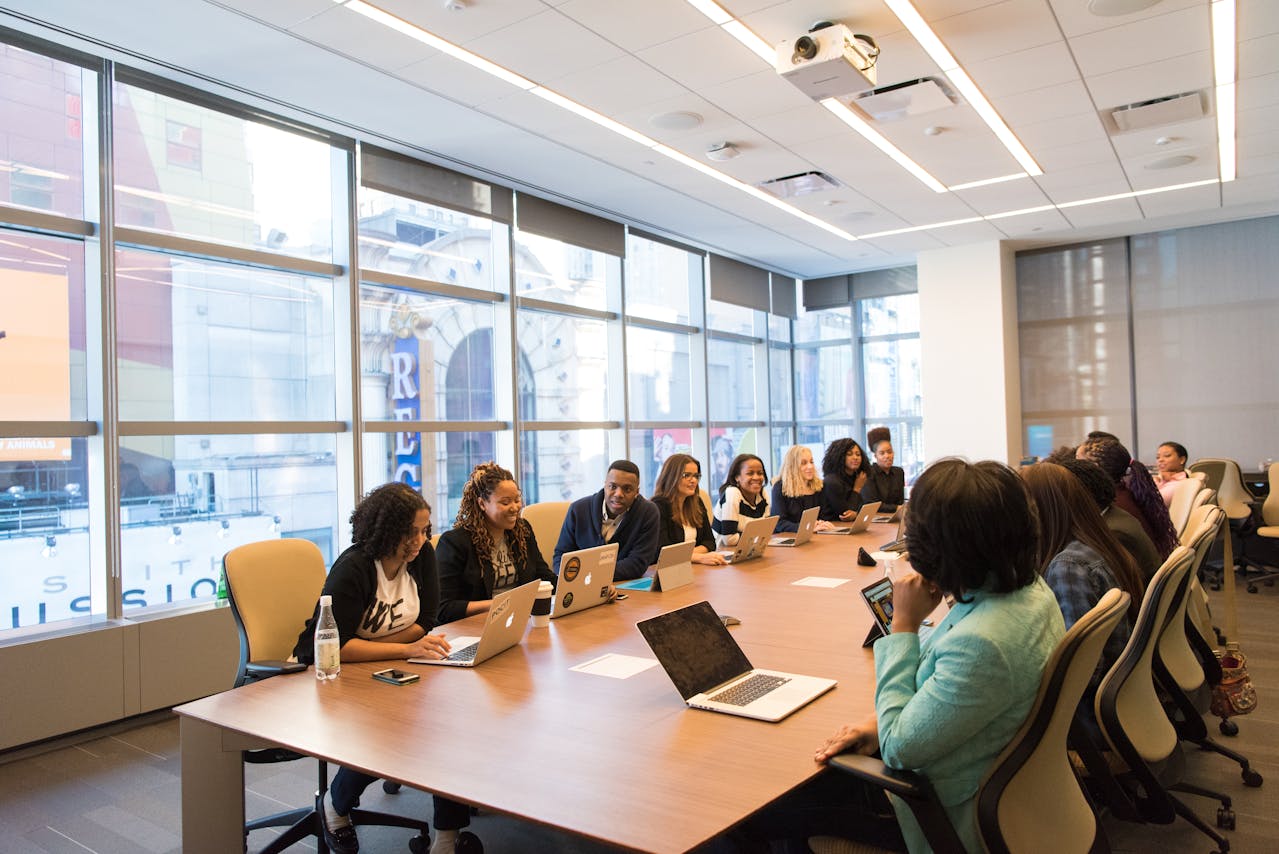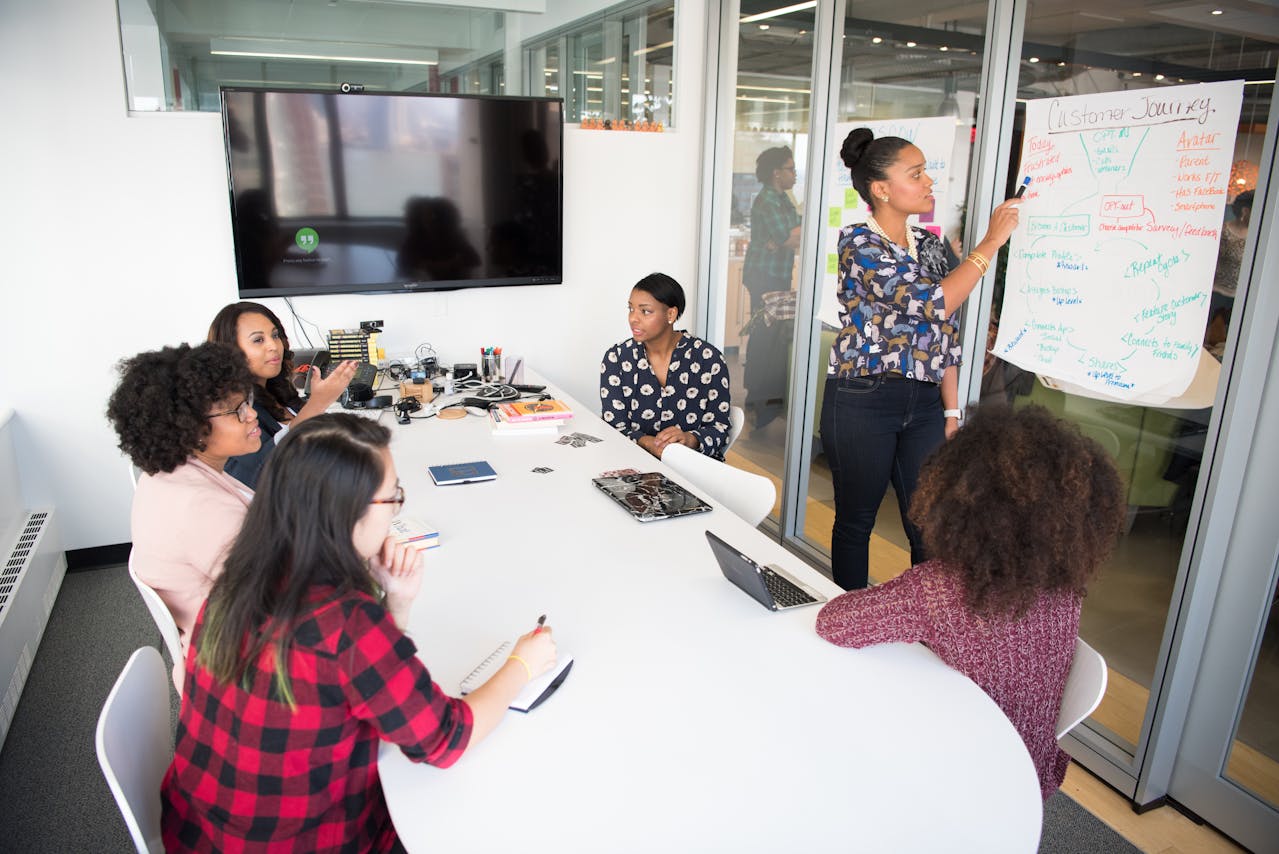According to the 2019 Change Lab Workplace Survey, it’s the quality of change leadership, not the quantity of change, that truly determines whether employee resilience thrives or dwindles. This surprising insight reveals a fundamental truth about how organisations navigate transformation.
In today’s VUCA environment, volatile, uncertain, complex, and ambiguous, the pace of transformation threatens to overwhelm even the most established organisations. Fluctuating regulations, disruptive competitors, and evolving client demands create unprecedented challenges that demand a robust response.
True resilience isn’t merely about bouncing back from adversity. It’s about developing the capacity to adapt well when facing significant stress and continuous transformation. This ability has become essential for survival and success in our rapidly evolving business landscape.
We’ll explore practical strategies that organisations can implement immediately while building sustainable strength for the long term. Using real-world examples and research-backed frameworks, we aim to help you navigate your own change journey with confidence.
While transformation can feel uncomfortable and challenging, with the right mindset and approaches, organisations can turn disruption into genuine opportunities for growth and innovation.
Key Takeaways
- The quality of leadership matters more than the volume of change when sustaining team strength
- Modern businesses face unique pressures from regulatory shifts and market disruptions
- Adaptive capacity goes beyond simple recovery to embrace continuous transformation
- Practical frameworks exist to help organisations navigate change more effectively
- With proper strategies, challenging transitions can become opportunities for growth
- Both immediate actions and long-term planning contribute to sustainable organisational health

Understanding Organisational Change and Resilience
As we navigate the complexities of contemporary business operations, the traditional models of managing change are being fundamentally challenged. The VUCA environment, volatile, uncertain, complex, and ambiguous, demands constant adaptation from modern organisations.
Traditional approaches to transformation struggle to keep pace with today’s rapid disruptions. Cyberattacks, data breaches, and climate events demonstrate how unpredictable our business environment has become.
Defining Organisational Change in a VUCA World
Change today means operating in a state of continuous flux. Organisations must develop the ability to anticipate threats before they emerge.
This proactive stance separates successful companies from those merely reacting to crises. It’s about building capacity for ongoing adaptation.
The Role of Resilience in Modern Organisations
True organisational resilience extends far beyond crisis management. It becomes a core capability that enhances business continuity and innovation potential.
Research shows that organisations investing in resilience during stable periods handle uncertainty better. They protect their people and maintain operations through adversity.
Lessons from Past Transformations
We’ve seen companies successfully navigate major disruptions by prioritising resilience-building efforts. These organisations demonstrate the value of proactive approaches.
Their experiences highlight that resilience isn’t a soft strategy but a strong business imperative. It positions organisations to thrive rather than just survive challenging times.
Building Resilience During Organisational Change
Creating lasting adaptability requires a dual-track strategy that addresses both present and future needs. This balanced approach ensures organisations can handle current pressures while developing sustainable strength.
Practical Steps for Immediate Impact
Quick-win strategies create momentum during difficult transitions. Establishing clear communication channels helps team members understand what they can control.
Creating psychologically safe spaces allows employees to voice concerns without fear. This builds trust and encourages participation in the transformation process.
Clarifying the “why” behind initiatives helps align personal values with organisational goals. These practical steps for immediate impact create foundation for deeper cultural shifts.
Long-term Strategies for Sustainable Growth
Sustainable approaches focus on developing a growth mindset culture. Challenges become learning opportunities rather than threats to avoid.
This isn’t a one-time initiative but an ongoing process requiring regular assessment. Organisations must adapt their strategies as they evolve and face new challenges.
A proper framework helps identify areas needing investment to strengthen capacity. Immediate actions build confidence while long-term approaches create foundational capabilities for sustained success.

Cultivating a Growth Mindset and Emotional Intelligence
At the heart of successful adaptation lies a powerful psychological framework that transforms how individuals perceive professional challenges. Dr Carol Dweck’s research on growth mindset reveals that our fundamental beliefs about learning capacity significantly influence how we navigate workplace transitions.
Embracing Challenges as Opportunities for Growth
Individuals with a growth orientation view obstacles as valuable chances for skill development. Rather than seeing difficulties as threats, they recognise them as stepping stones toward personal advancement.
Practical techniques include reframing internal narratives. Changing statements like “I can’t do this” to “I haven’t mastered this yet” creates space for development. This shift in perspective turns workplace challenges into meaningful learning experiences.
| Fixed Mindset Characteristics | Growth Mindset Characteristics | Impact on Change Adaptation |
|---|---|---|
| Avoids challenges | Embraces challenges | Seeks comfort zone |
| Views effort as fruitless | Sees effort as path to mastery | Gives up easily |
| Ignores useful feedback | Learns from criticism | Defensive response |
| Feels threatened by others’ success | Finds lessons in others’ success | Limited collaboration |
Developing Emotional Agility in the Workplace
Transformation inevitably involves emotional dips through fear and uncertainty. Recognising this pattern helps individuals navigate these feelings more effectively.
Emotional intelligence enables leaders to acknowledge team concerns without being controlled by them. Strategies include allowing progress over perfection and accepting constructive feedback. This approach fosters emotional agility throughout the organisation.
Combining growth mindset with emotional awareness creates a strong foundation for navigating uncertainty. Individuals learn to stretch themselves while maintaining optimism during difficult periods.
Empowering Leaders and Teams to Navigate Change
Effective leadership becomes the cornerstone when navigating periods of significant transition. Our teams look to us for clarity and direction when the ground beneath them shifts.
We must recognise our pivotal role in supporting people through uncertainty. This involves both strategic decision-making and compassionate communication.
Strengthening Leadership through Transparent Communication
Honest, frequent updates build essential trust among employees. When information flows freely, people feel more secure and engaged.
Leaders who share both challenges and successes demonstrate authentic commitment. This transparency prevents anxiety-inducing assumptions from filling communication gaps.
Fostering a Sense of Agency and Ownership
Agency, the capacity for self-directed action, lowers threat perception during transitions. We can empower our teams by offering real choices in how they adapt.
Inviting input on change strategies gives people meaningful ownership. This collaborative approach transforms resistance into participation.
Mentoring for Continuous Improvement
Effective leaders ask more questions than they make statements. This mentoring style creates space for employees to process at their own pace.
The simple question “What do you need?” demonstrates genuine support. It reinforces that we value collaboration over top-down directives.
Strong leadership isn’t about having all answers but creating conditions where teams feel capable. Together, we navigate transformation with shared purpose.

Adopting Agile Practices for Uncertainty
In today’s unpredictable business landscape, we find that agility has become more than just a buzzword, it’s a survival skill. True organisational agility is the ability to create and respond to change effectively, especially in turbulent times.
This approach goes beyond a specific methodology. It becomes a core mindset that embraces flexibility and iterative learning. When circumstances shift unexpectedly, this mindset allows for rapid adaptation.
Implementing Flexibility in Processes and Decision-making
So, how do we put this into practice? It starts with building adaptable frameworks for making key decisions. We can establish clear guidelines that allow teams to pivot quickly.
This prevents getting stuck in long approval chains. Here are some practical ways to introduce flexibility:
- Create short feedback loops to assess what’s working.
- Encourage small-scale experiments to test new ideas.
- Adjust plans based on real-world results, not rigid forecasts.
This structured yet flexible way of working helps organisations navigate uncertainty with more confidence. It turns potential obstacles into valuable data for better future choices.
Ultimately, fostering this agile thinking is a shared responsibility. It combines individual adaptability with supportive systems, creating a stronger, more responsive organisation.
Creating a Culture of Care and Collaboration
What truly drains our workforce’s energy isn’t the pace of transformation but the quality of workplace relationships. Research shows 75% of British employees feel managing difficult workplace politics causes the biggest drain. This reveals where we should focus our efforts.
The emotional context of our work environment directly impacts burnout rates. Dr Rebecca Erickson’s research demonstrates employees in low-trust settings report stress levels nearly three times higher. Creating positive emotional environments becomes essential for sustainable performance.
Prioritising Employee Well-being and Self-care
We must go beyond traditional benefits to support holistic health. Today’s workforce expects support for physical, mental, emotional and social well-being. Customisation matters since self-care needs vary between individuals.
Healthy boundaries between work and personal time are crucial. This includes consistent work hours and permission to truly disconnect. These habits formed during stable periods create foundations for challenging times.
| Low-Trust Environment Characteristics | High-Trust Environment Characteristics | Impact on Workforce Well-being |
|---|---|---|
| High levels of agitation and frustration | Psychological safety and openness | Triple the burnout rates |
| Employees fear negative consequences | Comfort voicing concerns and ideas | Higher engagement and energy |
| Focus on politics over collaboration | “We are in this together” mentality | Stronger collective resilience |
Building Trust Through Open, Transparent Communication
Trust grows through regular check-ins and personal connections. Simple questions like “What do you need?” demonstrate genuine support. This approach creates psychological safety where people feel comfortable asking for help.
When we intentionally invest in relationships, we strengthen our entire organisation’s capacity. This cultural foundation makes building organisational resilience a strategic capability rather than a reactive measure. Our people become our greatest asset in navigating uncertainty.

Utilising Technology and Resources for Robust Risk Management
The right technology stack acts as a strategic shield for modern organisations navigating uncertainty. It’s not about having the most tools, but the right ones that build efficiency and scale with our needs.
This approach transforms our management of business risk. We move from a reactive stance to a proactive one. Modern solutions help us identify threats before they materialise.
Enhancing Business Continuity with Modern Tech Solutions
Intuitive platforms are crucial for business continuity. When an incident occurs, any team member should be able to use the system confidently. Complex tools that require specialist knowledge create bottlenecks.
Seamlessly integrated tech stacks improve disaster recovery. They allow for faster response times and minimise operational impact. This is a hallmark of a truly resilient organisation.
Leveraging Data for Proactive Risk Mitigation
Data analytics empower us to make informed decisions. We can allocate resources strategically and anticipate challenges. Real-time monitoring triggers alerts for quick action.
The difference between proactive and reactive organisations is stark. Those with tested plans in place resolve incidents faster and spend less on crisis management.
| Reactive Approach | Proactive Approach | Business Outcome |
|---|---|---|
| Responds after an event occurs | Identifies and mitigates risks beforehand | Higher costs, longer recovery |
| Relies on manual processes | Uses automated monitoring and alerts | Increased operational downtime |
| Limited data for decision-making | Leverages business intelligence resources | Strategic advantage and stability |
Successful implementation hinges on effective change management. Providing adequate training ensures tools are used confidently during both stable and crisis periods. Viewing technology investment as a strategic resource, as explored in the evolution of technology in risk management, protects our business and supports our people through disruption.
Conclusion
Looking across the strategies we’ve discussed, a consistent theme emerges about sustainable organisational health. True strength doesn’t come from reacting to crises but from proactive investment in our people and processes during stable periods.
This journey requires continuous learning and adaptation rather than one-time initiatives. By empowering our team members and creating supportive environments, we transform challenges into growth opportunities.
Remember that organisational success during transformation hinges on how we support our workforce. While we cannot control external change, we can control our preparation and response.
Start today by identifying which approaches fit your organisation’s unique needs. The path to greater resilience begins with that first step toward creating a culture ready for whatever comes next.



